
views
Prep
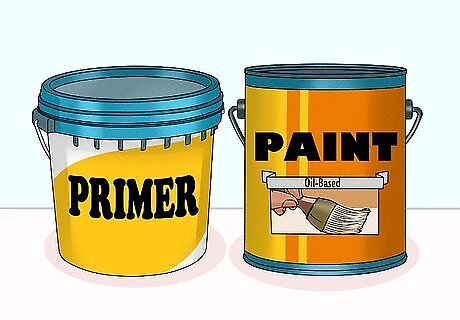
Choose the best primer and paint for your pillars. Your primer and paint ultimately depend on where your pillars are—always use interior primers and paints for indoor projects, and exterior products for outdoor ones. Pick out matching primers and paints for your pillar, so your paint job looks consistent overall. Exterior paints are formulated to resist mold, mildew, algae, and UV damage. Both latex- and oil-based paints work well with fiberglass columns. Paving paint works well if you’re painting concrete. If you’re painting wooden porch pillars, look for a combination primer and paint product—many porch paint products are made like this.
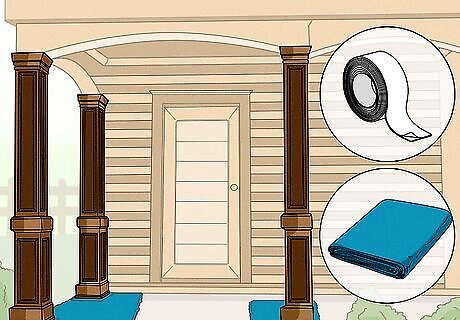
Protect your workspace with tape and drop cloths. Apply small strips of tape around the base of the pillar to help protect the surface below. As an extra precaution, set down plastic drop cloths all around your workspace. Always work in a well-ventilated space when you paint!
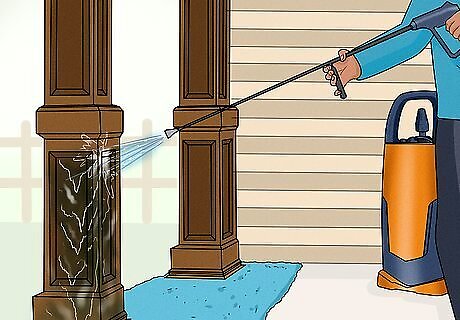
Clean your pillars before you start painting them. If your pillar isn’t very dirty, wipe it off with a damp rag or clean it with soap and water. You can also power-wash your pillar to give it a deeper clean. Let the surface dry completely, so the primer and paint have no trouble sticking to the surface. If you choose to power-wash your pillar, keep the water pressure at 1500 psi or lower so you don’t damage the surface.
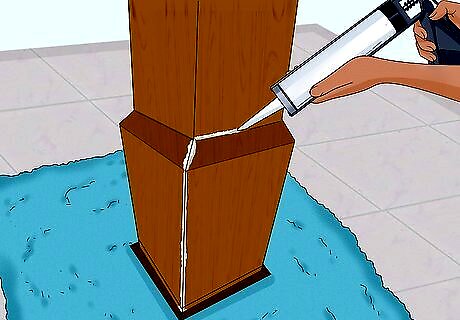
Seal any gaps between the caps and shafts of the pillar. Some pillars have a gap between the tall shaft of the pillar and the base cap. There’s no need to worry! Just apply a line of acrylic latex sealant or silicone caulk along this gap, so you have a smooth surface to paint over on your pillar. Then, check the caulk or sealant label and give it enough time to dry and cure completely. If you use silicone caulk, double-check the label to make sure you can paint over it—unfortunately, some caulks don’t work well with paint. If you’re working with a wooden surface, repair any holes with wood putty. Fill in any gouges or holes in a concrete pillar with a patching compound.
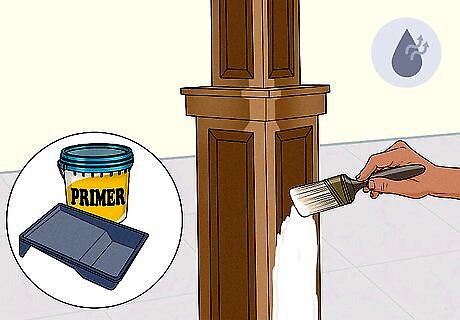
Apply a coat of primer with a 2 to 3 in (5.1 to 7.6 cm) brush and let it dry. Dip your brush into the primer, spreading it around the column in smooth, even strokes. Start painting along the top of the pillar and slowly make your way down to the bottom. Then, let the primer dry completely. Check the primer container to see what the recommended drying time is. You can use a roller for this as well, but some brands specifically recommend using a paintbrush. If you’re painting something large, like a porch, a paint sprayer may come in handy. If you’re painting an ornately-patterned pillar, you may have more luck with a brush.
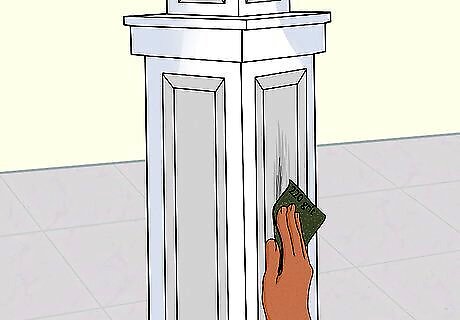
Buff the pillar with 220-grit sandpaper and wipe away the dust. Grab a sheet of sandpaper and work your way around the pillar. Then, grab a tack cloth or a rag soaked in denatured alcohol and wipe away any dust you created while sanding. Sanding helps the paint stick better to the surface.
Paint

Spread a coat of paint over the pillar and wait for it to dry. Dip a 2 to 3 in (5.1 to 7.6 cm) brush into your paint of choice and begin painting the column. As you did with the primer, start applying along the top of the column, slowly working your way to the bottom. Reference the paint container to see how much time your paint needs to dry.
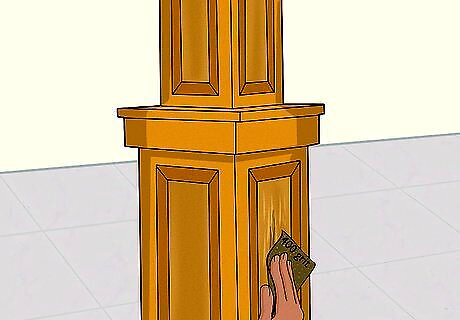
Sand the surface with fine sandpaper if the paint manufacturer recommends it. Double-check the label on your paint can—some companies recommend sanding the first coat of paint with a fine, 400-grit sheet of sandpaper, while others don’t require this. If your paint brand suggests it, grab a sheet of fine sandpaper and lightly buff over the surface of the paint. Then, wipe away any leftover paint dust. Acrylic latex and oil-based paints typically don’t need any additional sanding.
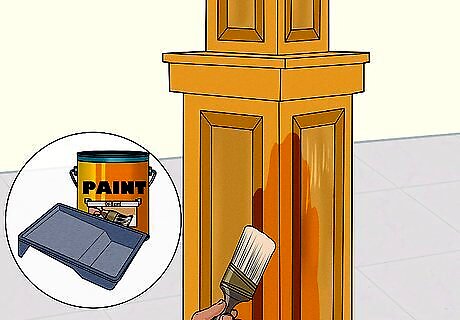
Apply a second coat of paint and let it dry. Dip your brush into the paint again and work your way around the pillar again. Continue starting at the top and move downward, spreading an even coat of paint all over the surface. Wait for the paint to dry completely—once it’s dry to the touch, you can put away your painting supplies and admire your newly-painted pillar! Some paint brands might recommend painting a final third coat. If your paint manufacturer recommends this, follow the same painting process as you did before.




















Comments
0 comment